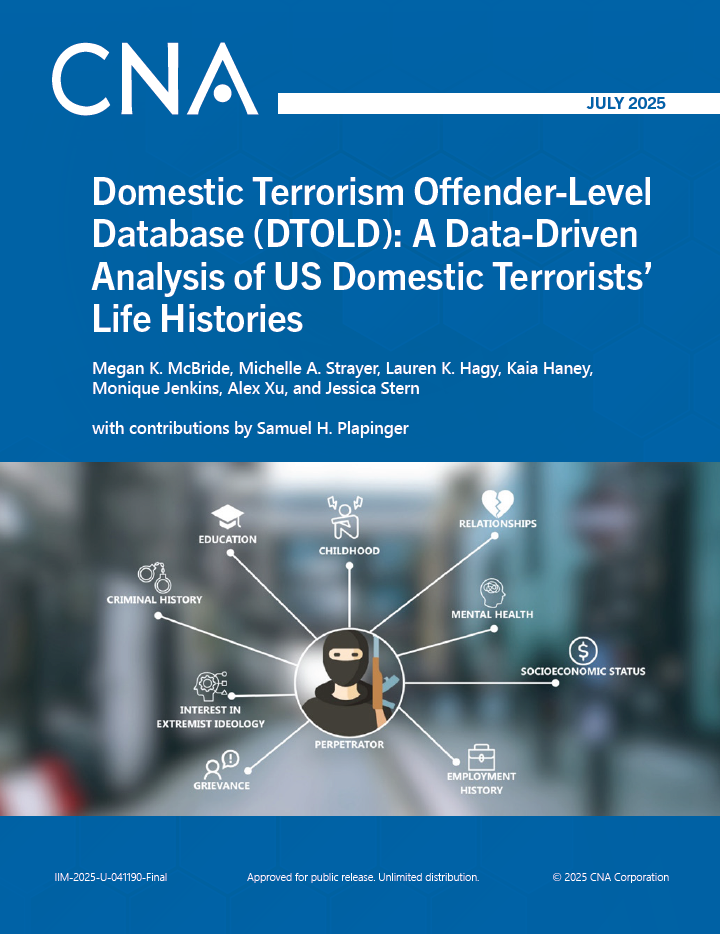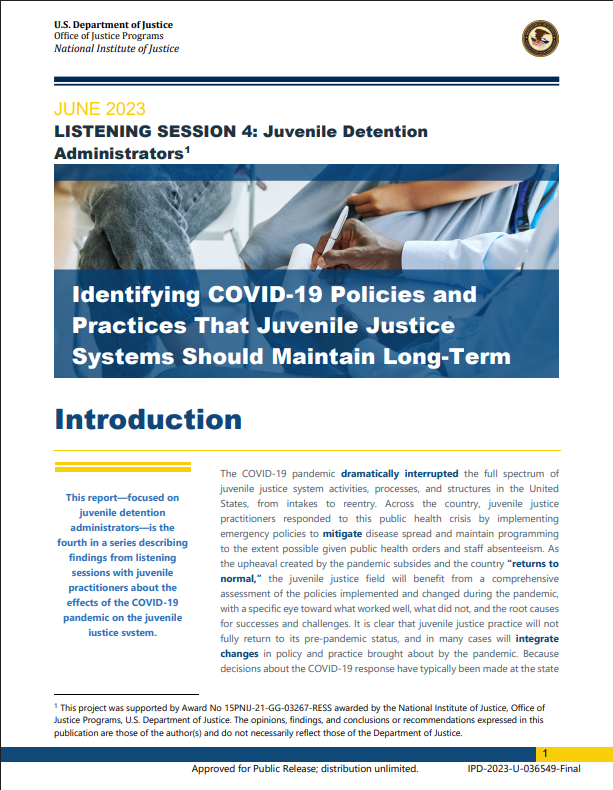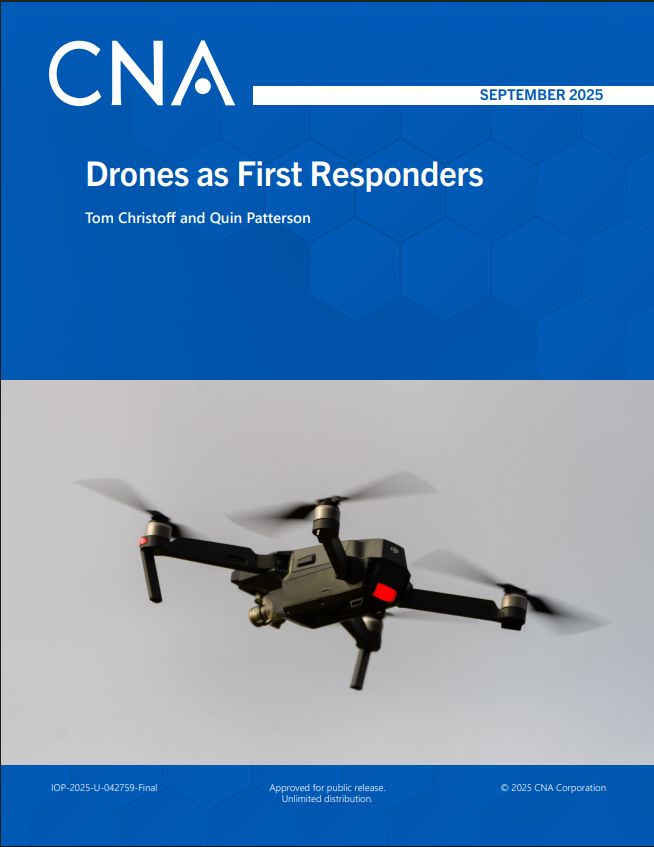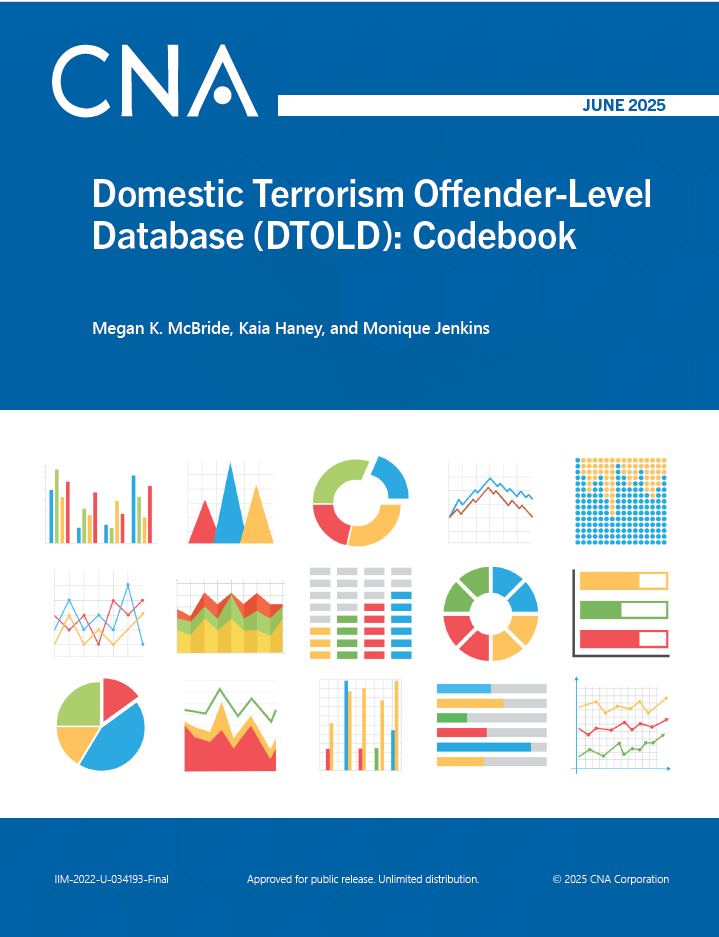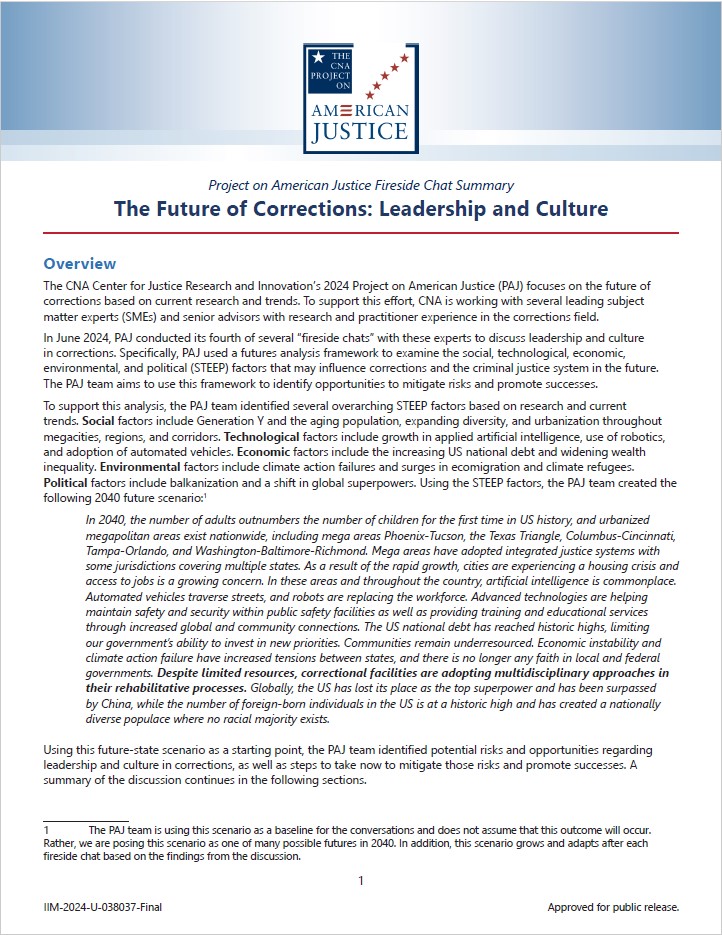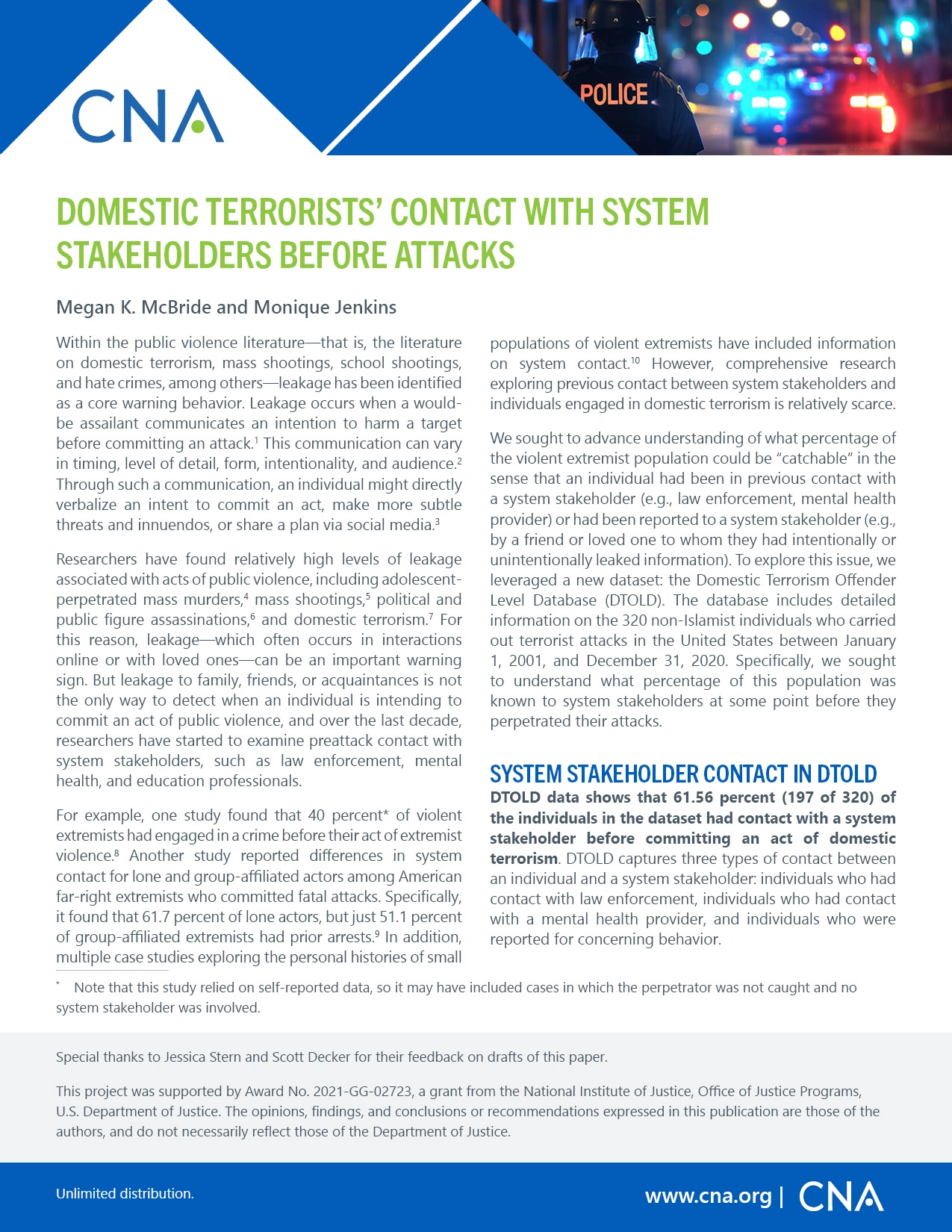Executive Summary
The Domestic Terrorism Offender-Level Database (DTOLD) is the first publicly available offender-level terrorism database that prioritizes psychosocial, trauma-related, and life history variables. Loosely modeled on the publicly available Mass Shooter Database (MSD) of the Violence Prevention Project Research Center (VPPRC), DTOLD was constructed with three goals: avoiding duplication of Profiles of Individual Radicalization in the United States (PIRUS) data, ensuring integration with other datasets, and prioritizing psychosocial, trauma-related, and life history variables. The final dataset aggregates data on 319 domestic violent extremists (DVEs) who met the following inclusion criteria:
- The attack is included in the Global Terrorism Database (GTD);
- The attack occurred in the US;
- The attack occurred between January 1, 2001, and December 31, 2020;
- The perpetrator was 18 or older at the time of the attack;
- If charges were filed, the case did not result in acquittal or mistrial; and
- The attack meets the Federal Bureau of Investigation’s (FBI’s) definitions of DVE and terrorism.
Research questions and key findings
This report provides a detailed discussion of our findings, including the relevant literature we drew from, the analytic techniques we used, and instances in which we returned a negative result. To preface that discussion, we highlight key takeaways from the study here:
- Affiliation. What variables are strongly correlated with how violent actors are affiliated with groups?
- Inspired by Borum, Fein, and Vossekuil (2012), we created a composite affiliation variable instead of using a binary (lone actor versus group actor) framework. The distribution of affiliation scores across the dataset validates what Borum et al. proposed (i.e., loneness is not a binary variable) insofar as the result is not a U-shaped graph with clusters around low and high affiliation.
- We found a statistically significant relationship between affiliation and lethality, confirming prior research suggesting that lower levels of affiliation (inclusive of lone actors) are correlated with higher levels of lethality.
- We found a statistically significant relationship between affiliation and target type such that offenders with higher rates of affiliation were the most likely to attack hardened targets (including industrial facilities, college/university laboratories, and government facilities). Much of this relationship can be attributed to environmental and animal rights extremists, who tend to have high levels of affiliation and who conducted more than half of the attacks on industrial facilities and colleges/ universities.
- We recognized that a person might not have a formal diagnosis of a mental health issue for a wide range of reasons, including lack of access to affordable behavioral health care, geographic inaccessibility of behavioral health care, and stigma around help-seeking behaviors. To account for this issue, we constructed a composite mental health variable to allow for a broad range of inputs. Using this variable, we found a statistically significant relationship between a history of mental health issues and low affiliation scores, in alignment with previous research.
- Lethality. What variables are strongly correlated with lethality?
- Consistent with previous research, we found that far-right violent offenders are significantly overrepresented in the group of perpetrators who killed or injured one to three people.
- We found no significant statistical evidence that lethality differs across specific ideologies.
- We found significant differences in the types of attacks committed by offenders of each ideology. Some, but not all, of these differences are likely attributable to the beliefs and practices within each ideology (e.g., anti-abortion terrorists embrace an ideology that places a premium on life, which likely explains why they more frequently attack infrastructure instead of persons).
- We found no statistically significant relationship between lethality and mental health issues, but we did find that those with mental health issues both commit more very-lethal attacks and commit attacks that are comparatively more lethal than the lethal attacks committed by offenders without mental health issues.
- Leakage. Do domestic terrorists of different ideologies or types share information about their plans (or “leak”) differently?
- Building on Meloy & O’Toole’s (2011) conceptualization of leakage, we constructed two composite binary variables for leakage: narrow leakage and broad leakage. We found statistically significant differences in both narrow and broad leakage rates across ideological groups.
- We found a positive relationship between both narrow and broad leakage and suicidality, such that the odds are higher that suicidal offenders will leak details related to their plans. However, in both cases, suicidality accounts for less than 2 percent of the variation in leakage, suggesting that other variables would have more explanatory power regarding variations in leakage between offenders.
- We found a positive relationship between affiliation and leakage, such that when an offender is more affiliated, the odds of leakage occurring increase. However, this relationship accounts for only about 3 percent of the variation in leakage, suggesting that other factors may be more influential in explaining variations in offender leakage.
- Profiles. What constellation of psychosocial, trauma-related, and life history variables are most strongly correlated with domestic terrorists of different ideologies?
- We used a partitioning around medoids clustering algorithm to create 10 distinct clusters that we could use to explore the question of terrorist profiles, but we found no unique life history profiles among offenders.
- We found no practically or statistically significant relationships between the 10 clusters and offender ideologies. However, environmental/animal rights extremism and conspiracy theory extremism did have relationships with specific clusters.
- Offender types. Are lethal lone actor domestic terrorists more like mass shooters or lethal non-lone domestic terrorists in terms of psychosocial, trauma-related, or life history variables?
- We found that lethal lone domestic terrorists are more like mass shooters in terms of age.
- We found that lethal lone domestic terrorists are more like non-lone lethal domestic terrorists in terms of suicidality, adult trauma, and narrow leakage.
- We found that lethal lone domestic terrorists fall between mass shooters and lethal non-lone domestic terrorists in terms of having a mental health issue, and we found that they leak broadly at lower rates than either lethal non-lone domestic terrorists or mass shooters.
- We found that the three groups are not statistically distinct in terms of sex or rates of childhood trauma.
As captured in companion documents to this final report, we also found the following:
- Domestic terrorists in general may be more suicidal than the general population but are significantly less suicidal than mass shooters, except when domestic terrorists kill four or more people (fatality requirement to qualify as mass shooter).
- Of the individuals in DTOLD, 61.5 percent had contact with a system stakeholder (e.g., law enforcement officials, mental health providers, education professionals) before committing an act of domestic terrorism.
- Individuals with unclear ideological motivations are less affiliated (i.e., less integrated into extremist communities) and less likely to leak (i.e., share information about their violent intentions), which may increase the challenge of identifying and preventing the acts of violence that they are planning.
Implications
There are three implications for researchers that merit highlighting. First, the finding on affiliation suggests that a binary distinction between lone and group actors may have limited utility. Second, the aggregate findings related to ideology suggest that ideologically based taxonomies have limited explanatory power (particularly when considering offender life histories and attack outcomes). Third, the existence of an ideology-less cohort within the dataset, and the similarities between domestic terrorists and mass shooters, suggest that distinctions between domestic terrorists, mass shooters, school shooters, etc. may be quite porous. In each case, though, additional research is needed.
For practitioners, the finding related to system stakeholder contact suggests a need for renewed focus on improving training for, and communication between, allied professionals most likely to encounter those at risk for committing acts of domestic terrorism. In addition, the finding of a correlation between suicidality and lethality has implications for both threat assessment and risk assessment efforts. Finally, the documented similarities between the life histories of domestic terrorists and mass shooters are relevant to policy-makers and practitioners seeking to design and implement intervention programming.
Download reportApproved for public release. Unlimited distribution.
Details
- Pages: 40
- Document Number: IIM-2025-U-041190-1Rev
- Publication Date: 7/14/2025
